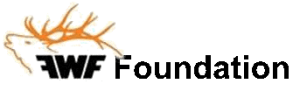Whio Forever community
Introduction
Our community partners are the people on the front line of whio conservation and advocacy.On this page:
- Partners who receive funding from Whio Forever
- Whio supporters
- Breeding centres
The growing success of the Whio Forever programme could not have been achieved without the efforts of countless volunteers, community groups, iwi, schools and others.
We'd like to acknowledge some of the community groups and organisations who have been in the programme.
Partners who receive funding from Whio Forever
Fiordland Wapiti Foundation
The Fiordland Wapiti Foundation (FWF) promotes and educates the public about the only free-range wapiti (elk) herd outside of North America.
In 2004, the FWF approached DOC to assist with stoat predator control along Worsley Stream and Castle River in the Northern Fiordland Whio Security Site, to assist the growing whio population in the neighbouring Clinton Valley.
In 2005, the Foundation established 26 km of trap lines along these waterways, which they continue to maintain. They also support a wide range of conservation projects including stoat predator control in the Glaisnock/Nitz Recovery Sites; and the control of red deer within the Wapiti Area.
Whio supporters
Central North Island Blue Duck Trust

The Central North Island Blue Duck Trust (CNIBDT) was formed in 2002 by Genesis, the Department of Conservation and Forest and Bird as part of a 15 year package to mitigate the effects of the Tongariro Power Scheme on whio and their habitat.
The Trust used that funding principally to support protection of existing whio populations in Whanganui river headwater tributaries within Tongariro Forest and the Manganuioteao River, and to support the establishment of a new population on Taranaki Mounga. The Trust also supported the establishment and/or continuance of small community initiatives in Pureora, Ruahine, Owhango, Tongariro River and Tarawera.
As the Trust reaches the end of its funded life, it is notable that the whio population in the Tongariro Forest is the largest and most productive in the country, while the new population in Taranaki is thriving, and the Manganuioteao population continues.
Real Journeys

Real Journeys offer tourism experiences in New Zealand’s deep south, and has been working in partnership with DOC on whio conservation in Fiordland since 2005.
Real Journeys have supported work around Whio Operation Nest Egg (Whione), translocations of wild whio juveniles, the extension of trapping networks, and the monitoring programme. Real Journeys staff also help with field work including whio river surveys, translocations and releases.
Trips & Tramps
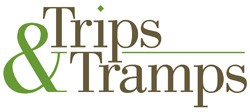
Trips & Tramps is a family-run business that has been operating small tours in Fiordland for over twenty years. They have been checking stoat traps in the Cleddau Valley, in the Northern Fiordland Whio Security Site, since 2003.
Recently they have expanded their stoat trapping network to the old Cleddau River delta at Milford Sound/Piopiotahi in conjunction with the Fiordland Conservation Trust and DOC.
Kepler Challenge

The Kepler Challenge Organising Committee manages the iconic mountain run, the Kepler Challenge.
In 2006, the committee entered into a partnership with DOC to establish and maintain stoat traps along the length of the Kepler Track. Whio in the Iris Burn have benefitted from this effort and have increased from one pair in 2006, to ten pairs in 2018.
A proportion of the fee to enter the FreshChoice Kepler Challenge is set aside to cover the cost of maintaining these traps.
Wairaurahiri Jet
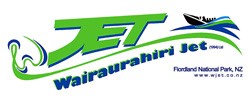
Wairaurahiri Jet operate a tourist jet boat service from Lake Hauroko down the Wairaurahiri River, in the heart of Fiordland National Park.
Business owners Johan Groters and Joyce Kolk have established and maintained a trap line down the Wairaurahiri River to protect bird-life. Whio are currently in low numbers but it is hoped their numbers will increase through this trapping effort. Johan and Joyce have won a number of conservation awards for their contributions.
Wilmot Pass Road Users Group
The Wilmot Pass Road Users Group comprises a group of businesses who use the Wilmot Pass Road in Fiordland. They have established and maintain 255 traps that target possums, stoats and rats between the west arm of Lake Manapouri and Deep Cove in Doubtful Sound. This protection has ensured the survival of whio, kiwi and weka, as well as possum-vulnerable plants like mistletoe. The whio population has grown from one to four pairs since trapping.
Hollyford Museum Charitable Trust
Dick Shefford of the Hollyford Museum Charitable Trust turned his desire to hear more wildlife along the Hollyford Track into a reality by maintaining stoat traps along the Hollyford Valley Road, and the start of the Hollyford Track. Whio have benefitted from his efforts, with a number of pairs now established.
New Zealand Alpine Club

The NZ Alpine Club, established in 1891, is a community of alpine adventurers. After approaching DOC to see if they could assist with stoat trapping in the upper Hollyford and Gertrude Valleys, and part of the Bowen River in Milford Sound, traps were established over the summer of 2011/12. Today the traps are maintained by the Hokonui Tramping Club, Southland Tramping Club and Fiordland Tramping and Outdoor Recreation Club.
Routeburn Dart Wildlife Trust

The Routeburn Dart Wildlife Trust was established in 2013 to help bring back the birdsong to the Routeburn and Dart Valleys and their tributaries. The Trust is comprised of key Queenstown and Glenorchy tourism operators, film-makers, farmers, local business-people and conservation-minded locals. Projects involve pest control and species reintroductions.
To date, the Trust has established 50 km of trap-lines in the valley forests to protect forest birds; 200 traps in the alpine areas of Harris Saddle and Hollyford Valley to protect rock wren and kea; and 600 traps on the Dart and Rees River margins to protect endangered braided river birds, including whio.
You can donate to help maintain and extend these trap networks.
Valleys Project

Valleys Project offers private individuals and corporates the opportunity to undertake significant yet affordable conservation projects in partnership with DOC and the NZ National Parks & Conservation Foundation.
Currently, this unique initiative encourages people to become kaitiaki (guardians) of valleys adjacent to the Whio and Takahe protection areas in Fiordland, establishing trap lines to complement DOC’s existing conservation efforts.
The first line was established in the Cozette/Camelot Valley west of Te Anau in 2016 with 250 traps along 13km of river, protecting nine whio pairs. You can help by donating or adopting a valley.
Paparoa Wildlife Trust
![]()
The Paparoa Wildlife Trust run conservation projects in the Paparoa Ranges near Greymouth, and work with DOC to help protect whio in Southern Paparoa.
A small group of dedicated volunteers trap an area of nearly 7000 ha, with plans to increase this range with 400 traps in the near future. Their efforts protect a remnant population of whio who have been bolstered with the release of approximately 30 juvenile whio to date.
Arthur's Pass Wildlife Trust
Arthur’s Pass Wildlife Trust are members of a community dedicated to protecting the entire eco-system of the Bealey Valley in Arthur's Pass National Park.
The Trust operates a range of trapping and monitoring programmes and work closely with DOC to protect kea, great-spotted kiwi and whio. Arthur’s Pass Village is a popular visitor destination with an estimated 50,000 international and national tourists per year, providing the rare opportunity for visitors to see these precious species within minutes of the village.
Nina Valley Restoration Group
Nina Valley Restoration Group is comprised of students, parents and teachers from Hurunui College in Hawarden, and was formed in 2008 to give students ownership of a conservation project. The group works closely with DOC to learn about conservation and applied research, and have established and maintain stoat traps in the Nina Valley of the Lewis Pass for the protection of whio and great spotted kiwi.
Ruahine Whio Protector
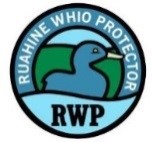
Ruahine Whio Protectors are a collection of groups that manage an extensive network of trap lines in the Ruahine Ranges to protect and grow the local whio population. Traps are maintained by volunteers with some support from DOC.
With a current estimate of 30 pairs of whio protected, the Trust’s goal is to protect 50 pairs by 2020, with the long-term goal of protecting this species throughout the entirety of the Ruahine Ranges.
Ngatapa Restoration Charitable Trust
The Ngatapa Restoration Charitable Trust undertake significant conservation initiatives on 8,000 ha of privately-owned remote mountainous land in the central North Island.
Restoration work at Ngatapa Station has been ongoing for over a decade, with substantial efforts made to reduce pest populations in order to protect native birds, with the whio population a particular focus. Work includes a substantial trap network for pest species and a rodent and mustelid monitoring programme.
Breeding centres

Auckland Zoo is one of the easiest places to see whio, within a High Country aviary designed just for them and incorporating a fast-flowing stream with rapids and riffles. More than 700,000 visitors per year are able to enjoy watching and learn about these special ducks, their plight in the wild and are encouraged to support their conservation.
Auckland Zoo joined the Whio Recovery Captive Breeding programme in 2004.
Hamilton Zoo
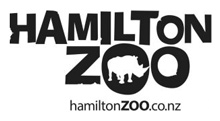
Hamilton Zoo has been involved in the Whio Recovery Captive Breeding programme for many years and has a successful track record of breeding and releasing birds into the wild.
Home to the largest free flight aviary in the North Island, it's a great place to check out the zoo’s breeding pair of whio, as well as a wide range of other native and endemic birds.
Orana Wildlife Park

Orana Wildlife Park in Christchurch is New Zealand’s only open range zoo. The park has a proven track record of successfully breeding whio for release to the wild. Staff are committed to educating the public on the plight of this endangered species and how visitors can directly assist whio.
The Park is also part of conservation efforts for the pāteke/brown teal, kiwi and the orange-fronted parakeet and has an extensive native fauna section, enabling visitors to see a wide range of threatened native birds and reptiles.
Pūkaha National Wildlife Centre

Pūkaha National Wildlife Centre is a thriving centre of conservation, restoration and celebration of native wildlife, located in protected forest at Mount Bruce, north of Masterton.
Pūkaha is home to a successful whio captive breeding programme with ducklings released back to the wild every year. Eggs retrieved from wild whio nests are also brought to Pūkaha for artificial incubation and rearing. These whio ducklings are then used to form new breeding pairs for the national Whio Recovery Captive Breeding programme.
Isaac Conservation and Wildlife Trust

The Isaac Conservation and Wildlife Trust in Christchurch, also known as Peacock Springs, specialise in breeding endangered species to be released into the wild.
Hundreds of whio have hatched from both wild and captive eggs since 1994 at their facility, and they also take birds from other breeders for hardening prior to release.
Peacock Springs is not open to the public due to the sensitivity of the work carried out there.
Willowbank
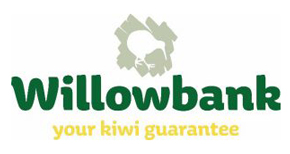
Willowbank Wildlife Reserve is based in Christchurch, housing and breeding numerous native New Zealand species.
Willowbank has a long history of displaying whio for advocacy and has recently built an enclosure where you can get up close to view whio.
Wildbase Recovery
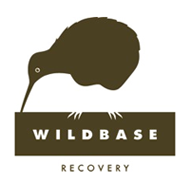
Opening in 2019, Central Energy Wildbase Recovery in Palmerston North is a world-class facility for the rehabilitation of native wildlife, with purpose-built aviaries for native birds including whio.
The facility will enable for community engagement and conservation education.
Nga Manu Trust
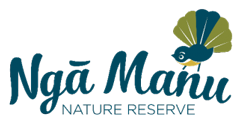
The Nga Manu Trust in Waikanae was established in 1974 and has been involved in numerous breed-for-release programmes.
The 14ha site contains a precious remnant of lowland swamp forest as well as rehabilitation facilities for injured native wildlife, and aviaries dedicated to breed-for-release programmes.
The Reserve is open to the public and whio are held in a walk-through enclosure which allow public to observe the species at close quarters.

